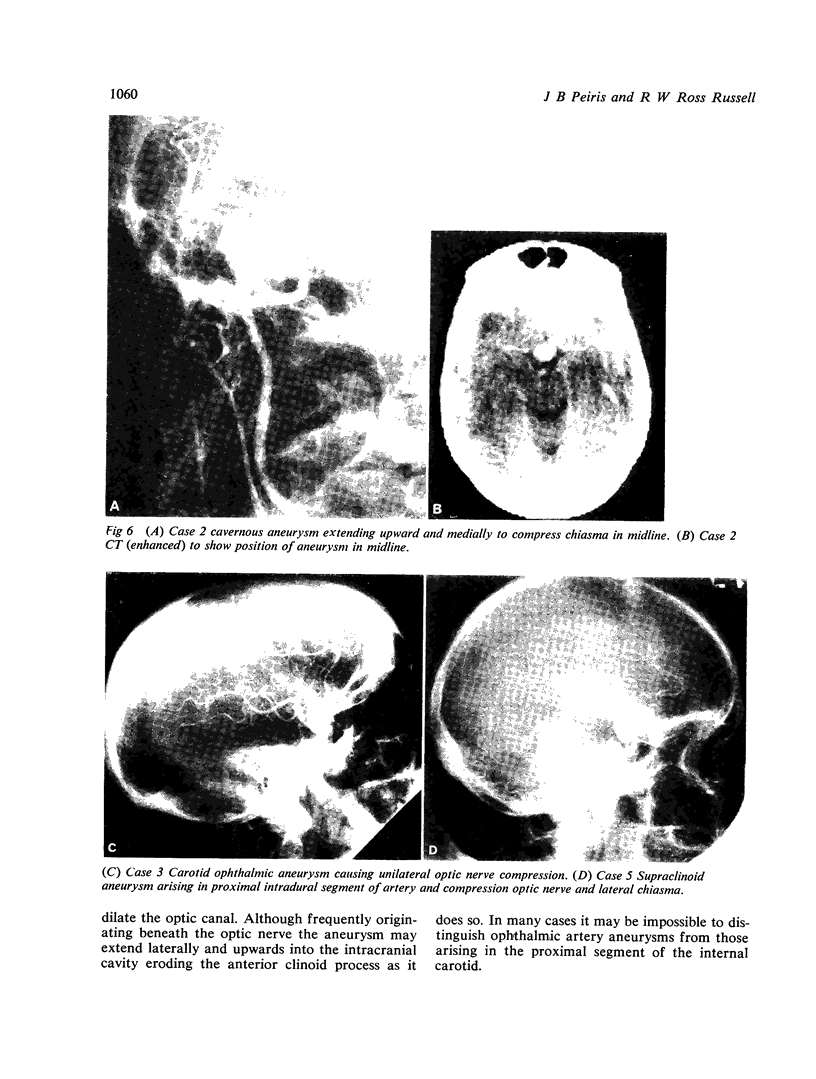Abstract
Visual field loss was the presenting symptom in 19 patients with large intracranial aneurysms of the carotid system. Location of the aneurysm was cavernous, carotid-ophthalmic (two), supraclinoid (nine), anterior communicating (six). Other features were pain and a long history of fluctuating visual loss. Cavernous or carotid-ophthalmic aneurysms mostly caused purely uniocular field loss consistent with optic nerve compression. Supraclinoid aneurysms most often caused a lateral chiasmal syndrome. Anterior communicating aneurysms caused asymmetric compression of one or both optic nerves, the eye contralateral to the feeding artery being more often affected. Carotid ligation appeared to arrest visual deterioration in some patients in the supraclinoid group.
Full text
PDF











Images in this article
Selected References
These references are in PubMed. This may not be the complete list of references from this article.
- Barr H. W., Blackwood W., Meadows S. P. Intracavernous carotid aneurysms. A clinical-pathological report. Brain. 1971;94(4):607–622. doi: 10.1093/brain/94.4.607. [DOI] [PubMed] [Google Scholar]
- Bird A. C., Nolan B., Gargano F. P., David N. J. Unruptured aneurysm of the supraclinoid carotid artery. A treatable cause of blindness. Neurology. 1970 May;20(5):445–454. doi: 10.1212/wnl.20.5.445. [DOI] [PubMed] [Google Scholar]
- Bull J. Massive aneurysms at he base of the brain. Brain. 1969;92(3):535–570. doi: 10.1093/brain/92.3.535. [DOI] [PubMed] [Google Scholar]
- JEFFERSON G. Further concerning compression of the optic pathways by intracranial aneurysms. Clin Neurosurg. 1953;1:55–103. doi: 10.1093/neurosurgery/1.cn_suppl_1.55. [DOI] [PubMed] [Google Scholar]






